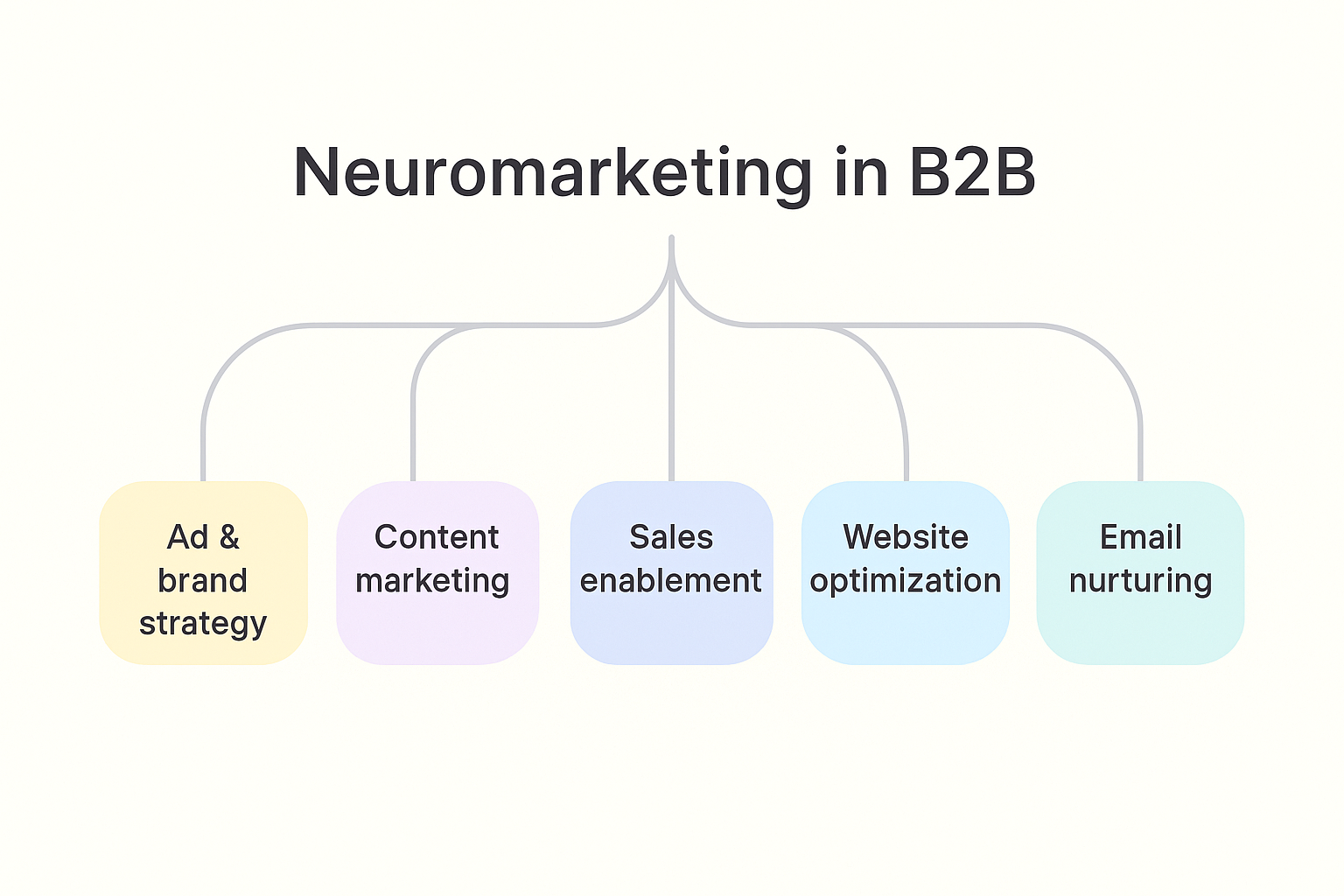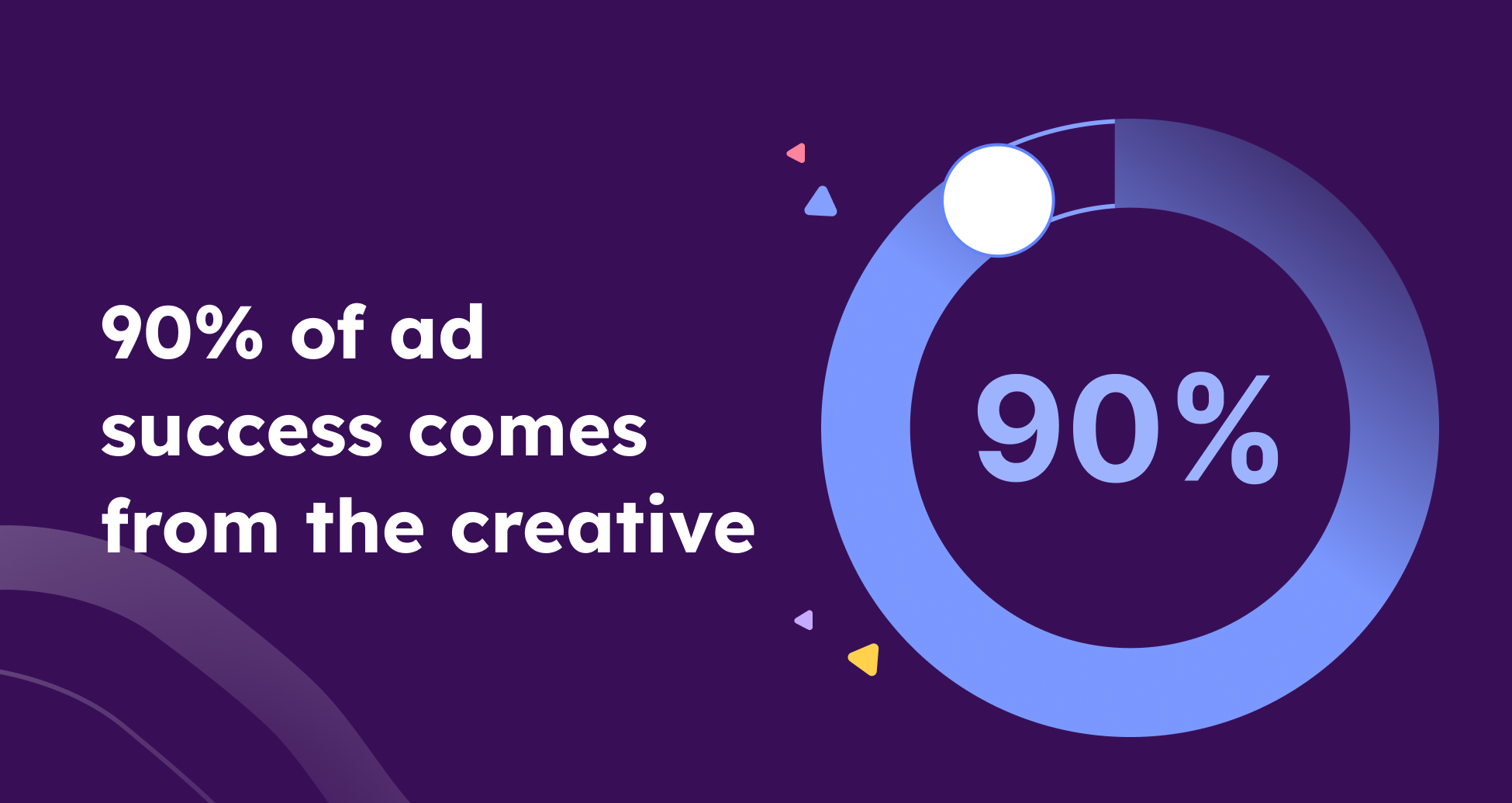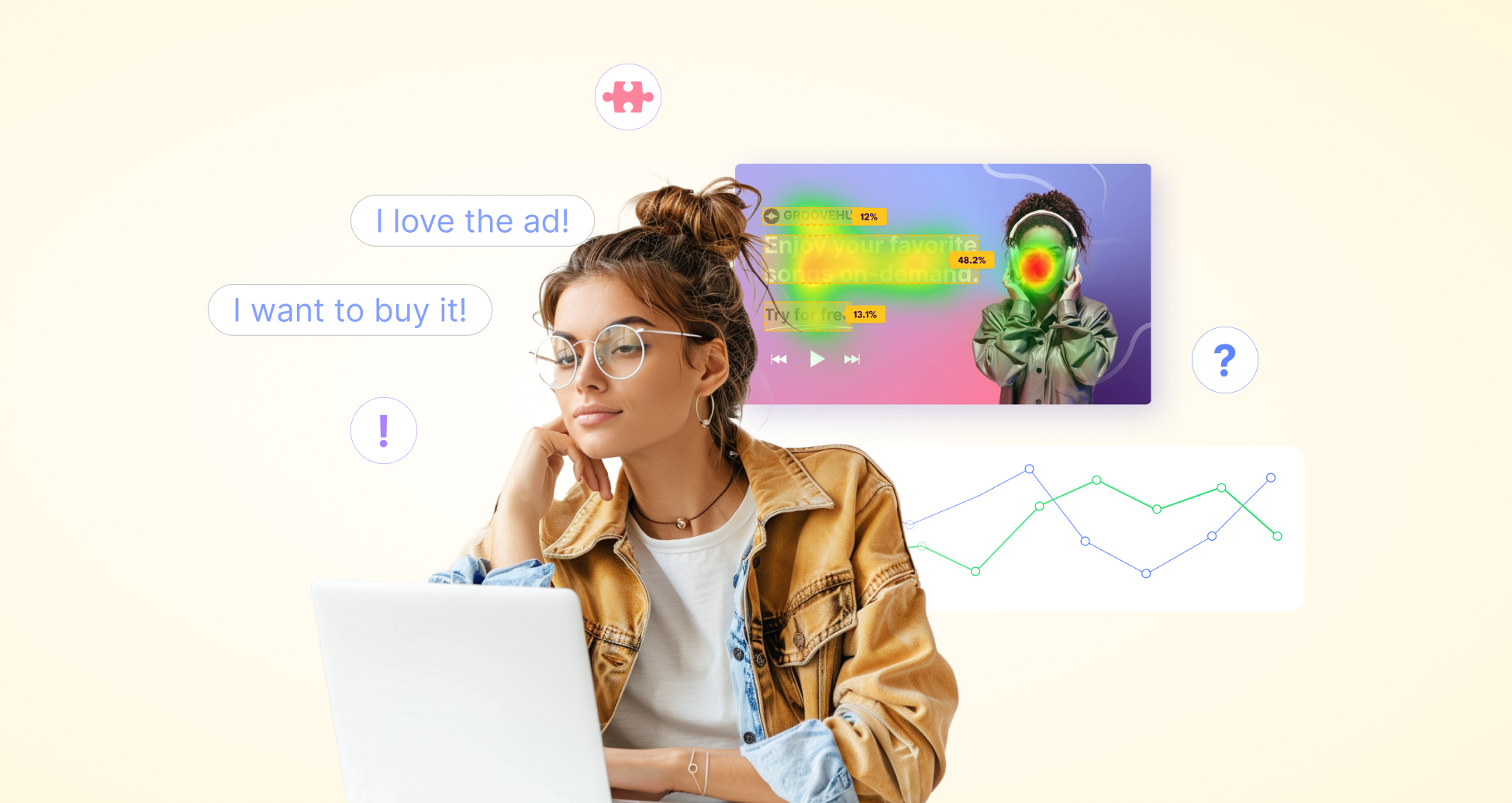
Neuromarketing in B2B applies neuroscience techniques to decode how professional decision-makers perceive brand messaging, advertising, and sales interactions. By measuring subconscious emotional and cognitive responses, companies can design strategies that feel more trustworthy, engaging, and persuasive.
The benefits of neuromarketing in B2B include influencing buyer intent, increasing lead conversion rates, and improving trust-based messaging across marketing and sales touchpoints. Brands that integrate neuroscience insights into their B2B strategies create more intuitive journeys, strengthen brand authority, and move buyers more confidently through complex decision-making processes.
Neuromarketing is applied in B2B marketing to uncover how professional audiences emotionally and cognitively process brand messaging, advertising, and sales experiences. By studying subconscious drivers of trust, authority, and decision-making, brands can optimize their strategies to align more closely with how B2B buyers actually think and feel during complex purchasing journeys.
Five key areas where neuromarketing enhances B2B performance are listed below.
To explore broader applications of neuromarketing across industries, visit our guide to neuromarketing applications.

Neuromarketing in B2B advertising and brand strategy focuses on understanding how professional audiences emotionally respond to marketing messages, brand visuals, and value propositions. By measuring subconscious trust signals, attention patterns, and emotional engagement, brands can craft campaigns that feel more credible, persuasive, and emotionally aligned with decision-makers' priorities.
Four key applications of neuromarketing in B2B advertising and brand strategy are listed below.
B2B brands using neuromarketing insights create campaigns that move beyond rational appeals, tapping into the emotional drivers that build trust, shorten decision timelines, and strengthen brand preference.
To explore more about aligning brand messaging with subconscious drivers, visit our guide to neuromarketing techniques.

Neuromarketing in thought leadership and content marketing focuses on crafting materials that capture attention, maintain engagement, and improve message retention among B2B audiences. By understanding emotional and cognitive responses to long-form content, brands can design whitepapers, articles, and reports that resonate more deeply and position the company as a trusted authority.
Four key applications of neuromarketing in thought leadership and content marketing are listed below.
B2B brands that apply neuromarketing principles to thought leadership create content that feels both intellectually credible and emotionally compelling, strengthening trust and building brand loyalty over time.
Neuromarketing in B2B sales enablement focuses on shaping conversations, materials, and tools that subconsciously build trust, reduce decision friction, and increase buyer confidence. By understanding how decision-makers emotionally and cognitively process sales interactions, brands can equip teams with strategies that better align with natural buyer behavior.
Four key applications of neuromarketing in B2B sales enablement are listed below.
By applying neuromarketing insights, sales enablement strategies move beyond traditional logic-driven persuasion and tap into the emotional shortcuts that drive faster, more confident B2B buying decisions.

Neuromarketing in B2B website and landing page optimization focuses on creating digital experiences that align with how professional audiences naturally process visual information, messaging, and calls to action. By measuring attention flow, emotional engagement, and cognitive load, brands can design websites that feel intuitive, trustworthy, and conversion-focused.
Four key applications of neuromarketing in B2B web and landing page optimization are listed below.
B2B brands that optimize websites using neuromarketing techniques create digital journeys that feel faster, simpler, and more emotionally rewarding, improving both lead capture and buyer confidence.
Click here for 7 easy ways to improve your landing page CTRs.

Neuromarketing in lead nurturing and email marketing focuses on designing communications that align with how B2B buyers emotionally and cognitively respond to offers over time. By applying neuroscience insights to subject lines, messaging sequences, and calls to action, brands can build stronger relationships and move prospects through complex sales funnels more effectively.
Four key applications of neuromarketing in lead nurturing and email marketing are listed below.
B2B brands that apply neuromarketing principles to lead nurturing create more personalized, emotionally compelling touchpoints that increase lead engagement, shorten sales cycles, and build lasting trust.
The table below summarizes the key neuromarketing applications in B2B marketing, highlighting their primary goals and the techniques used to influence professional decision-making.
Neurons provides predictive neuromarketing solutions designed to help B2B companies optimize how their brand messaging, sales materials, websites, and marketing campaigns connect with professional decision-makers. By combining neuroscience, artificial intelligence, and behavioral data, Neurons enables B2B brands to measure attention, emotional resonance, and cognitive load before launching critical assets.
Through Neurons software, B2B teams can pre-test advertisements, refine landing pages, optimize sales enablement content, and design more effective lead-nurturing journeys — all based on how the brain processes information and forms trust.
To discover how neuromarketing software can enhance your B2B strategies, learn more about our solutions.